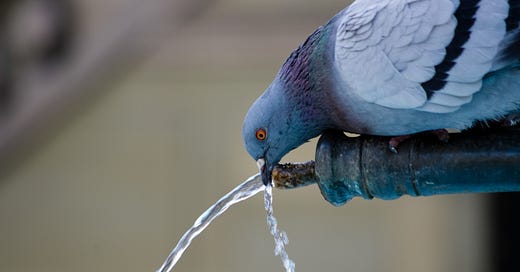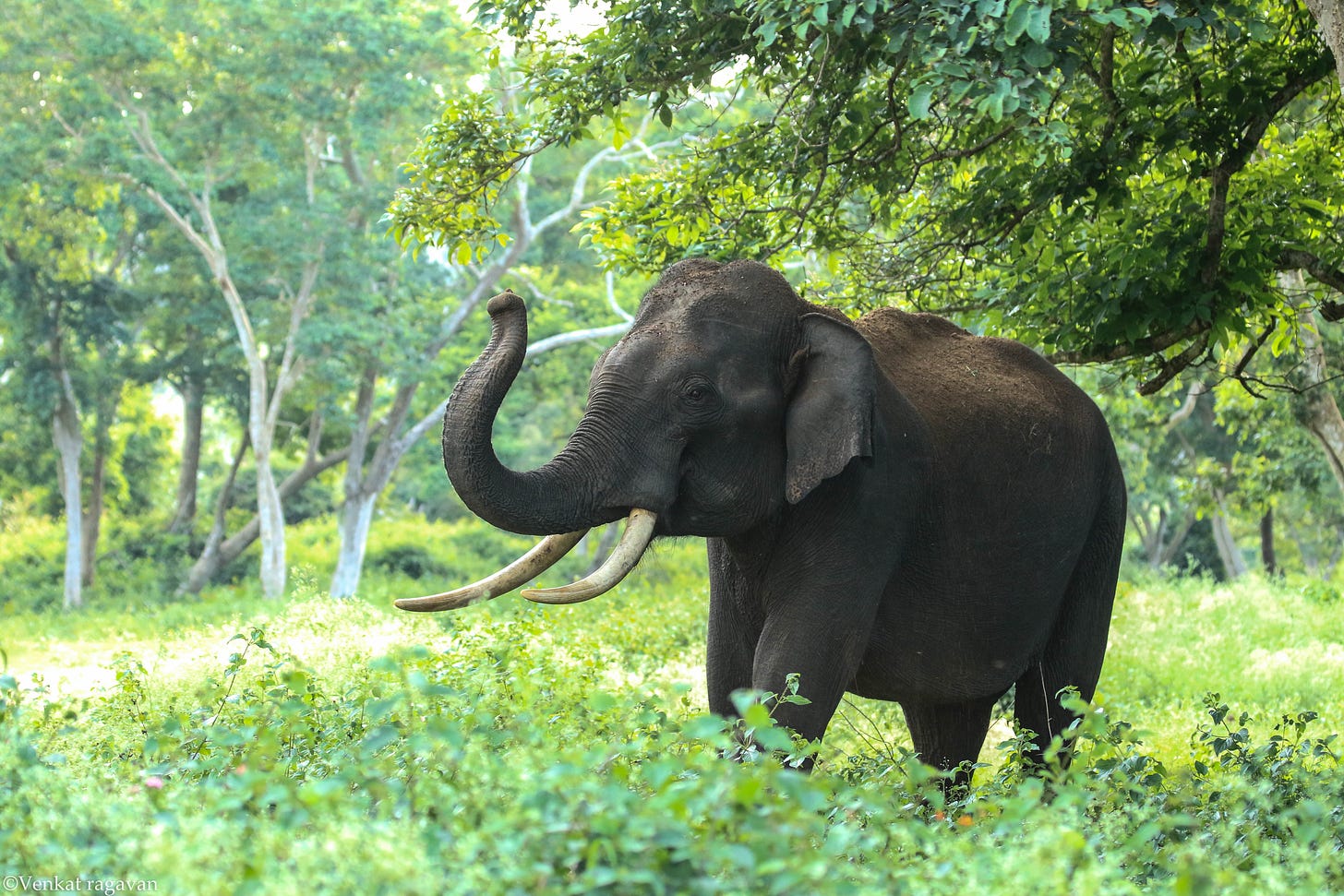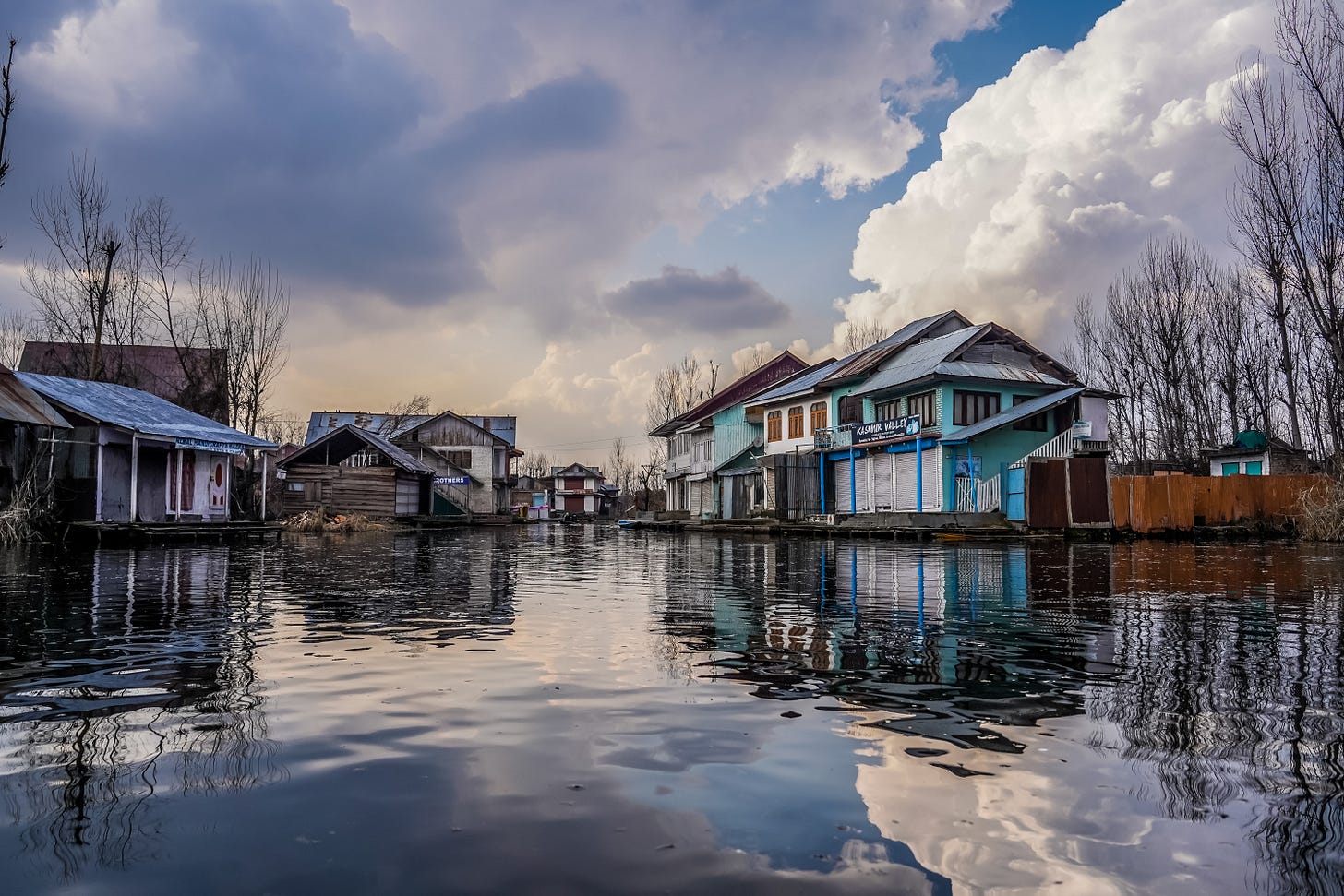Here in New York City, it seems like a common question among the novice bird-curious is where to find the baby pigeons. People have asked me — and I’ve seen on the internet — where all these pigeons are laying their eggs, and where the chicks are growing up. We’ve got plenty of adult pigeons in the Big Apple (according to some estimates, millions of them) and we all know adult pigeons must come from eggs, so somewhere there must be millions of baby pigeons in millions of pigeon nests.
It’s true. There are plenty of pigeon nests all over the city, but we don’t see them because they’re in hidden corners of the city — of which there are many. Pigeons will nest in the crook between two buildings, underneath bridges, and on rooftops, gutters, scaffolding, or wherever.
Notably, pigeons don’t usually nest in the place most associated with bird nests — trees. That’s because pigeons didn’t evolve to nest in trees, and prefer things like ledges, crooks, bridges, rooftops, gutters, and scaffolding to a branch.
But wait wait wait wait wait. Surely pigeons must have been around for longer than there has been a New York City? New York City as we know it has only existed for a little more than 400 years, and the pigeon (Columba livia) has surely been around longer than that. So where were they living before the island of Manahatta become Manhattan?
The pigeon, or “rock pigeon” as it is more accurately named, is native to Europe, Africa, and western Asia. Prior to the development of urban centers, they lived on cliffsides and rocky hills, nesting in crevices and caves. But a few thousand years ago, their evolutionary trajectory was changed forever through an encounter with another species: Homo sapiens.
Humans began domesticating pigeons for food, companionship, mail-carrying, racing, and showmanship (much like dog shows, pigeons also have shows). When Europeans began traveling to the Americas, they brought their pigeons with them — and eventually, these pigeons found a new home as we built a whole new habitat that perfectly mimicked their mountainous homes.
The city, if you were to imagine it from the perspective of an alien creature first visiting Earth, does look sort of like a cavernous mountain range. Steep pyres of rock surround earthen chasms, giant boulders filled with caves cover the spaces in between, and patches of grass and water create just enough of a lifeline for life to thrive.
For the pigeon, it’s a perfect little home. In fact, they do better in cities than in the countryside — do you ever see a pigeon in the woods? Not so much, right? In this case, when it comes to New York City, just because pigeons can make it here doesn’t mean they can make it anywhere. (Please feel free to unsubscribe to this newsletter because of that joke.)
They’re not the only ones, either — plenty of creatures thrive in the big city, like brown rats, raccoons, squirrels, house sparrows, white-throated sparrows, chipmunks, painted turtles, red-tailed hawks, common starlings, cockroaches, and house mice. Sometimes, there are even coyotes in Manhattan (really).
Because while the city does not scream “habitat” as you might imagine it, habitat is simply what you make of it. And just as humans have built new habitats like cities, other wildlife build their own habitats — beavers dam creeks to form ponds that host fish, reeds, and frogs; elephants knock down trees to keep the savanna grassy and open, perfect for antelope and zebra.
These interactions, between land and animals, water and plants, mountains and rivers and pigeons and bridges and people and coyotes and frogs — that’s what we mean when we say “ecology”. Ecology is how the living interacts with the non-living, and back again. It’s how butterflies eat cow poop and cow poop washes into creeks and creeks are home to little fish and little fish are eaten by bigger fish and bigger fish are eaten by people and people are killed by viruses and viruses jump from people into gorillas and back into people, and those people raise cows who poop. Diagrammatically, biology textbooks like to show ecology as “pyramids” of food, or “circles” of nutrients, or “chains” of interactions but in reality, it’s all one big blob with a million strands hitting and fighting and supporting each other.
Ecology is place, community, and change — and you need all three for it to be ecology.
Humans understand places and communities, we’re relatively good at building both. But change is hard for us, and creates a lot of the friction we’ve put between ourselves and the rest of our ecosystems.
Riverbanks flood with big storms, but when we build homes on the river (because it’s pretty or because our job is on the river) we don’t like it when it floods so we build walls and dams to hold the water back. Pigeons eat plenty and shit those nutrients out, but we don’t like sitting in bird shit so we put spikes up on the benches and eaves so the pigeons don’t have a place to roost. We’re constantly pulling fossil fuels up out of the ground and burning them into the sky, filling the air with smoke and heating out planet at a rapid pace — but this change, we feel, is inevitable for us to live.
It doesn't have to be this way. In Places, Chris Reed and Nina-Marie Lister write about shifting our built environment toward a more holistic view of humanity and ecology. They write:
“The challenge of the paradigm shift toward complex systems thinking is to realize that we cannot manage whole ecosystems; rather, we can manage ourselves and our activities.”
We cannot control when the rain will fall or the beaver will build his dam. Nor can we control where the tsetse fly lands or the pigeon chooses to nest. But we can choose to build our spaces, the human built environment (one of the most drastic biological changes to the face of the planet in history), in myriad ways.
At a book talk I attended recently, someone brought up the concept of umwelt, the unique way each species navigates the world. Just as we have great eyesight and two legs that can carry us miles away, some birds navigate the world from the air using even keener eyesight, dogs smell their way around the city, and mosquitos seek out fresh blood. The discussion at the book talk posed the question: what if instead of just building for our own way of seeing the world, our own umwelt, what if we built for plenty of other umwelten?
When I say this newsletter covers ecology, that’s what I mean. Ecology is how giraffes and acacia trees evolved in a battle of evolutionary proportions, ecology is how predatory sea stars in tidepools of the Pacific shape their ecosystems from the top down, and ecology is even how cities build public transportation and house people. But instead of seeing these as individual phenomena, we need to see them as one big question, one big ecosystem. Sea stars, giraffes, acacia trees, subways, and apartment buildings, all in one.
Ecology isn’t everything on the planet — it’s the interactions between everything and everything else.
Point is, there’s a lot of material to get through. This week: pigeons.








🧡🧡